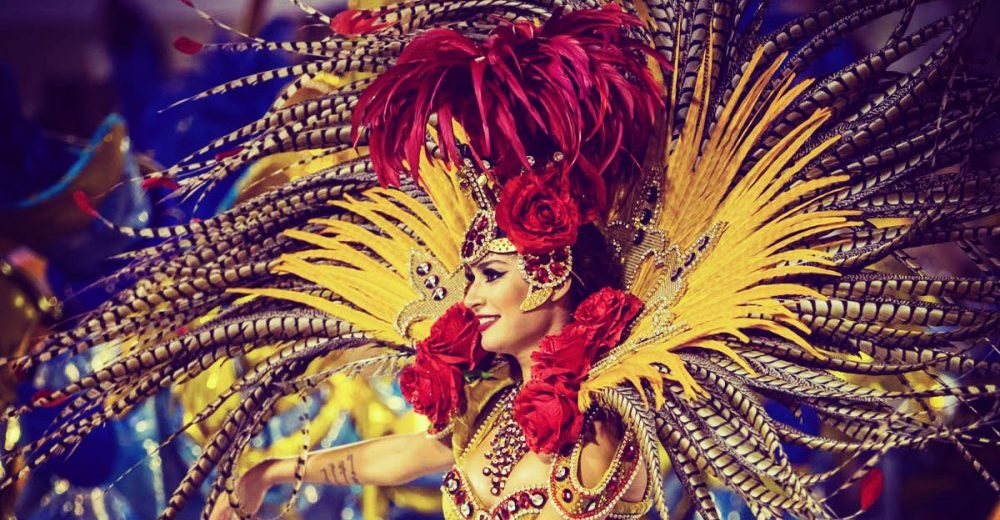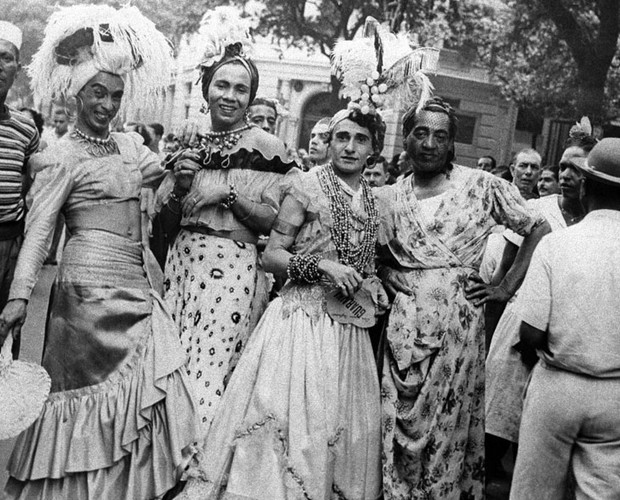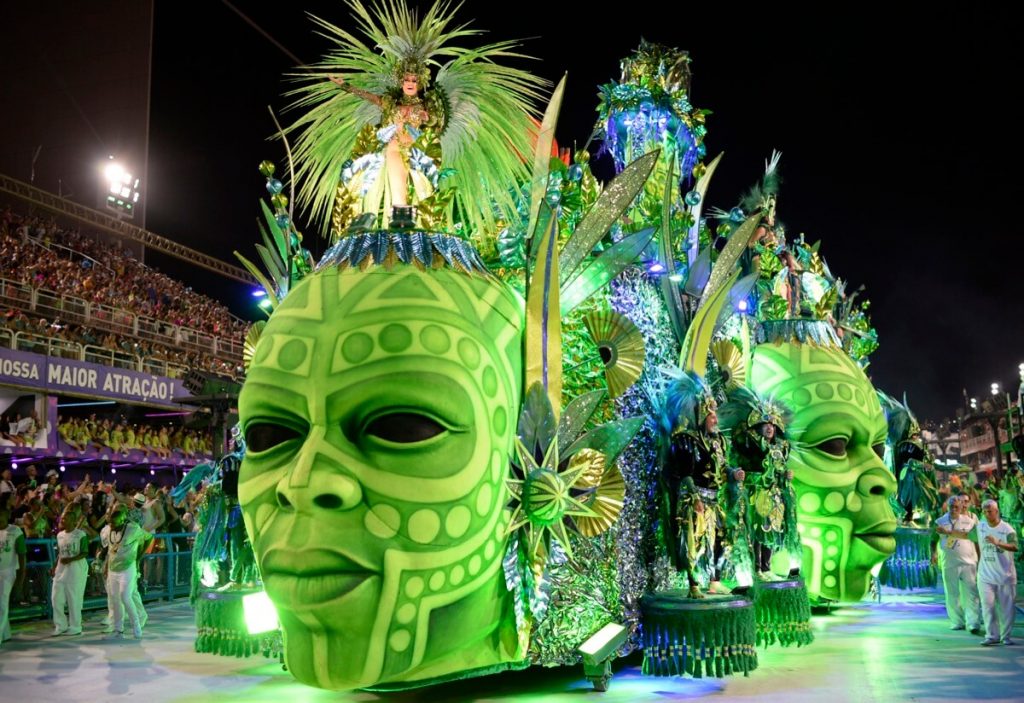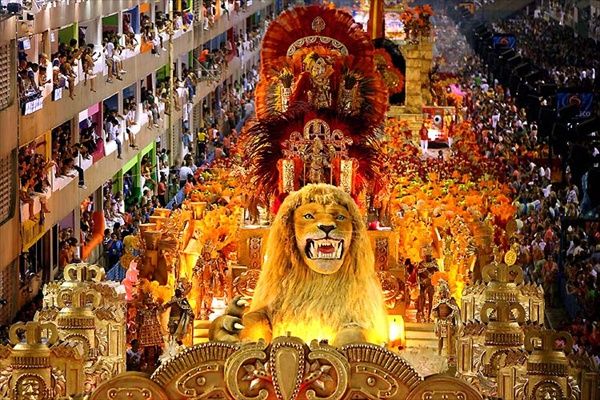
Rio Carnival is one of the most well-known cultural celebrations in the world, known for its vibrant and colorful parade, samba music, and festive atmosphere. This annual event takes place in Rio de Janeiro, Brazil, and lasts four days, typically in February or March.
The origins of Rio Carnival date back to the 18th century, when the Portuguese brought the tradition of celebrating Carnival to Brazil. Over time, the celebration evolved to incorporate elements of African, Indigenous, and other cultural traditions, giving rise to the unique and vibrant spectacle celebrated today.
Carnival is a cultural event that reflects the city’s diversity, creativity, and passion. People of all ages, backgrounds, and social classes come together to enjoy music, dance, and other forms of artistic expression.
Rio Carnival is economically significant because it draws millions of visitors worldwide each year, generating substantial revenue for the city and supporting thousands of jobs in tourism, entertainment, and hospitality.
The History and Origins of Rio Carnival

Rio Carnival dates back to the 17th century and evolved to reflect Brazil’s cultural diversity. In the 20th century, samba became the central music and dance style. The first samba schools emerged in the 1920s and became the focal point of the Carnival. Rio Carnival grew throughout the century, becoming one of the world’s largest festivals. The city invested in the Carnival in the 1980s, building the Sambadrome and supporting Samba schools. Today, Rio Carnival attracts millions worldwide and includes parades, street parties, balls, and other festivities showcasing Brazil’s culture and heritage.
The Significance of samba music and Dance in Rio Carnival
Samba music and dance are integral to Rio Carnival, and their significance cannot be overstated. Samba is a Brazilian musical genre and dance style that originated in the late nineteenth century in Rio de Janeiro. It is characterized by its lively, upbeat tempo and syncopated rhythms, often associated with Brazilian cultural identity and national pride.
Samba music and dance are deeply intertwined with the celebration of the Rio Carnival. Samba schools, which are social clubs that serve as the foundation of the Carnival parade, are responsible for creating and performing samba music and dance routines during the parade. Each samba school represents a different Rio de Janeiro neighborhood with its unique style, costumes, and themes.
The samba parade is the highlight of Rio Carnival, attracting millions of spectators worldwide. During the parade, samba schools compete against each other, with each school performing a choreographed routine that lasts for approximately an hour. The performances are accompanied by live samba music played by a percussion ensemble of up to 300 musicians.
Samba music and dance play a significant role in Brazilian culture, and they are celebrated throughout the year, not just during Rio Carnival. It is also recognized as a symbol of Brazilian national identity and a UNESCO Intangible Cultural Heritage of Humanity.

The preparation and planning involved in Rio Carnival
Rio Carnival preparations take a year and include extensive planning, practice, and rehearsals. Each samba school participating in the parade must create a unique samba routine that reflects their chosen theme, costumes, and musical arrangements. The preparation process involves several steps, including:
- Theme Selection: Each samba school must select a piece to inspire their samba routine. The article can be related to any aspect of Brazilian culture, history, or current events.
- Songwriting: Once the theme is chosen, the samba school must compose a song to accompany their routine. The music must be original and reflect the chosen theme.
- Choreography: The samba school must create a choreographed routine that complements the samba song. The practice can include various dance styles and movements, props, costumes, and thematic elements.
- Costume Design: Each samba school must create costumes that reflect their chosen theme and complement their samba routine.
- Rehearsals: Samba schools typically begin rehearsing for Rio Carnival several months before. The trials involve practicing the samba routine, music, and dance moves and perfecting the timing and coordination of the entire performance.
The various events and activities during Rio Carnival

Rio Carnival is a multi-day event with a variety of events and activities. Some of the most popular events and activities that take place during Rio Carnival include:
- Street Parties (Blocos): These are informal street parties throughout the city during Carnival. Local groups organize them, and participants wear costumes and dance to live music.
- Samba Parades: The samba parades are the main attraction of Rio Carnival, and they take place in the Sambadrome. Each samba school performs a choreographed routine that lasts approximately an hour, accompanied by live samba music.
- Balls: Carnival balls are elegant events that feature live music, dancing, and formal attire. They are held throughout the city and are frequently attended by local celebrities and politicians.
- Street Performances: Throughout Rio de Janeiro, street performers such as musicians, dancers, acrobats, and other performers showcase their talents during Carnival.
- Carnival Museum: The Carnival Museum in Rio de Janeiro pays homage to the history and culture of Carnival. It features exhibits on samba music and dance, Carnival costumes, and the evolution of Carnival over time.
- Beach Parties: Rio de Janeiro’s famous beaches, such as Copacabana and Ipanema, are popular Carnival destinations. Many beachfront bars and restaurants host parties and events during the Carnival period.
- Food and Drink: Rio Carnival is a time to indulge in Brazilian cuisine and drinks. During the celebrations, local specialties such as feijoada (a stew of black beans and pork), caipirinhas (a cocktail made with cachaça, lime, and sugar), and churrasco (barbecue) are popular.
The cultural significance of Rio Carnival
Rio Carnival has significant cultural importance for the people of Rio de Janeiro and Brazil.
For many Brazilians, Carnival is a time to express their creativity and showcase their artistic talents, from designing costumes to composing samba songs. It is also a time to celebrate diversity as people from various backgrounds and communities come together to celebrate.
Carnival has a long history in Brazilian history and culture, dating back to the country’s colonial era. The celebration reflects the blending of African, European, and Indigenous cultures that make up Brazil’s unique cultural identity.
Furthermore, Rio Carnival has become an international symbol of Brazilian culture, drawing millions of visitors each year worldwide. The festival has helped promote Brazilian music, dance, and arts globally and has also become essential to the country’s tourism industry.
Travel and accommodation
Getting to Rio de Janeiro is relatively easy, as the city is served by two major airports: Galeão International Airport and Santos Dumont Airport. Direct flights are available from both airports to major global cities such as New York, London, and Paris.
Rio de Janeiro has many accommodation options to suit all budgets and preferences. Visitors can stay in luxury hotels, low-cost hostels, apartments, or bed and breakfasts. Copacabana, Ipanema, and Leblon are popular neighborhoods to stay in because they are close to the beach and have a variety of amenities and attractions.
The cost of travel and accommodation in Rio de Janeiro, like any major city, varies depending on the time of year, location, and level of luxury. During Rio Carnival, prices for hotels and flights tend to be higher due to high demand. It’s recommended to book travel and accommodation well in advance to secure the best deals.
Other costs when visiting Rio de Janeiro include food, transportation, and activities. Local food can be relatively affordable, especially street food and regional markets. Public transportation, such as buses and the metro, is also reasonably priced and can be an excellent way to explore the city. Activities such as visiting attractions, taking tours, and attending events can vary in price, so it’s best to research and compare options beforehand.
Rio Carnival is a celebration of life, music, and community, an experience not to be missed.
Happy Travels!
People also checked:

